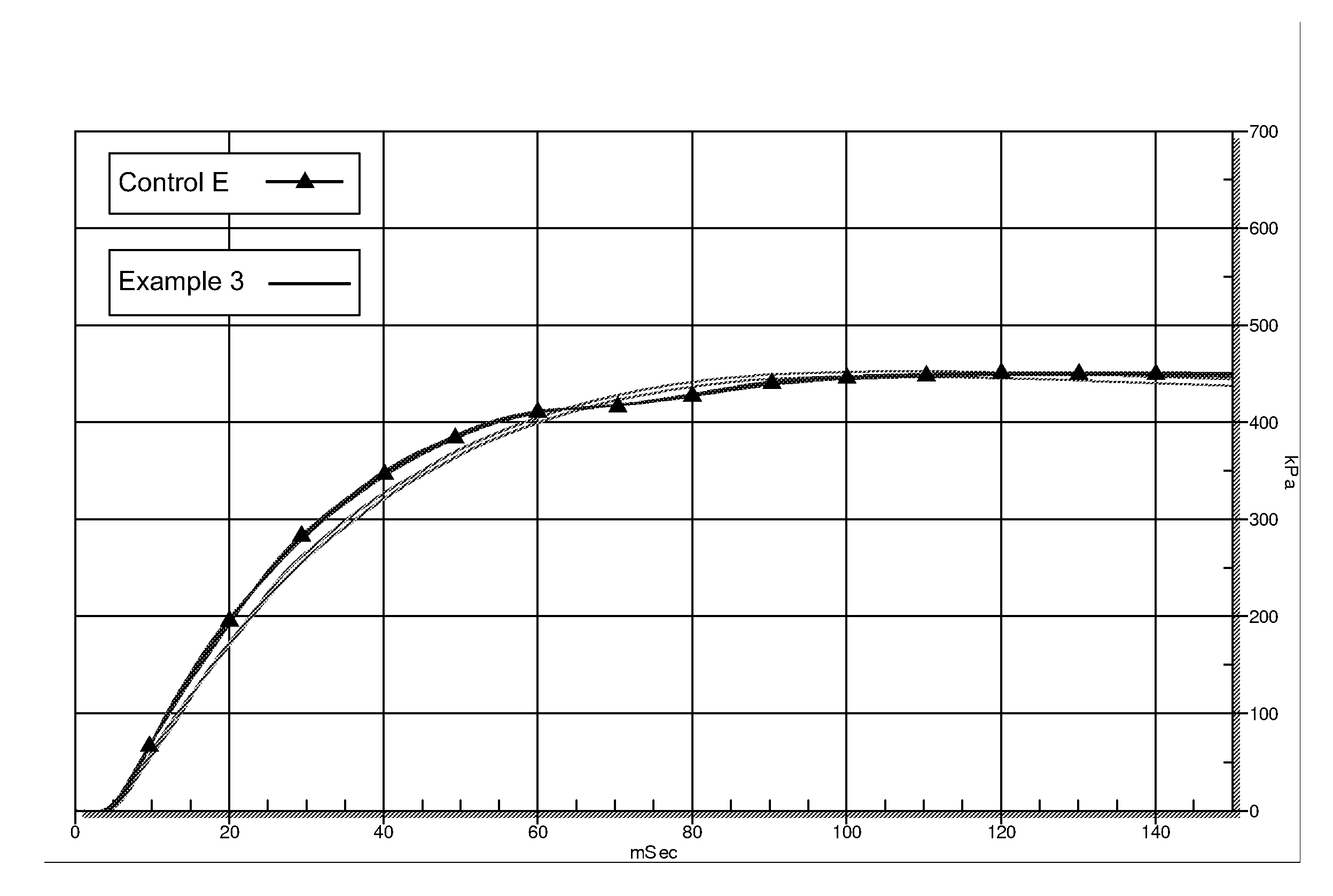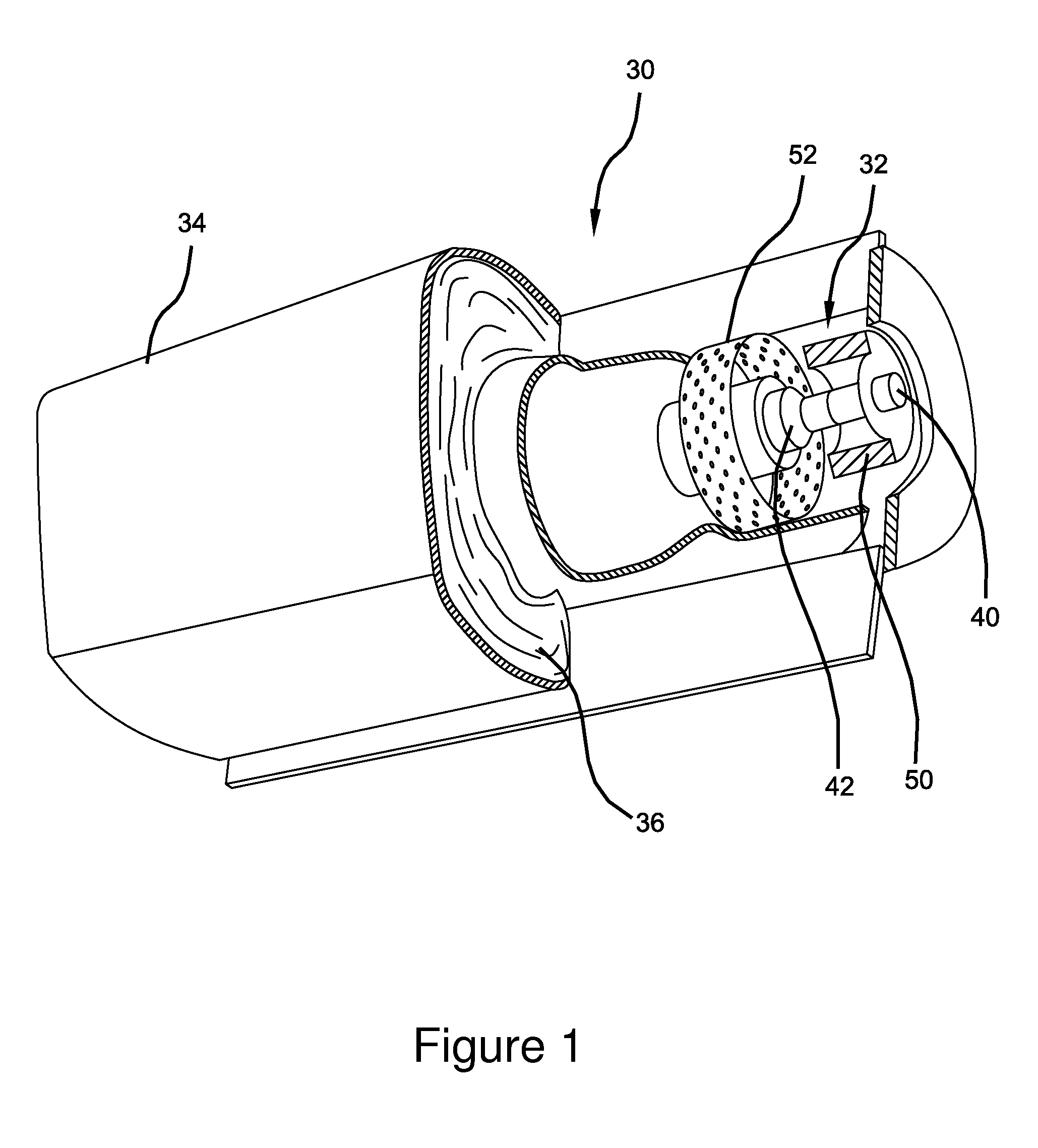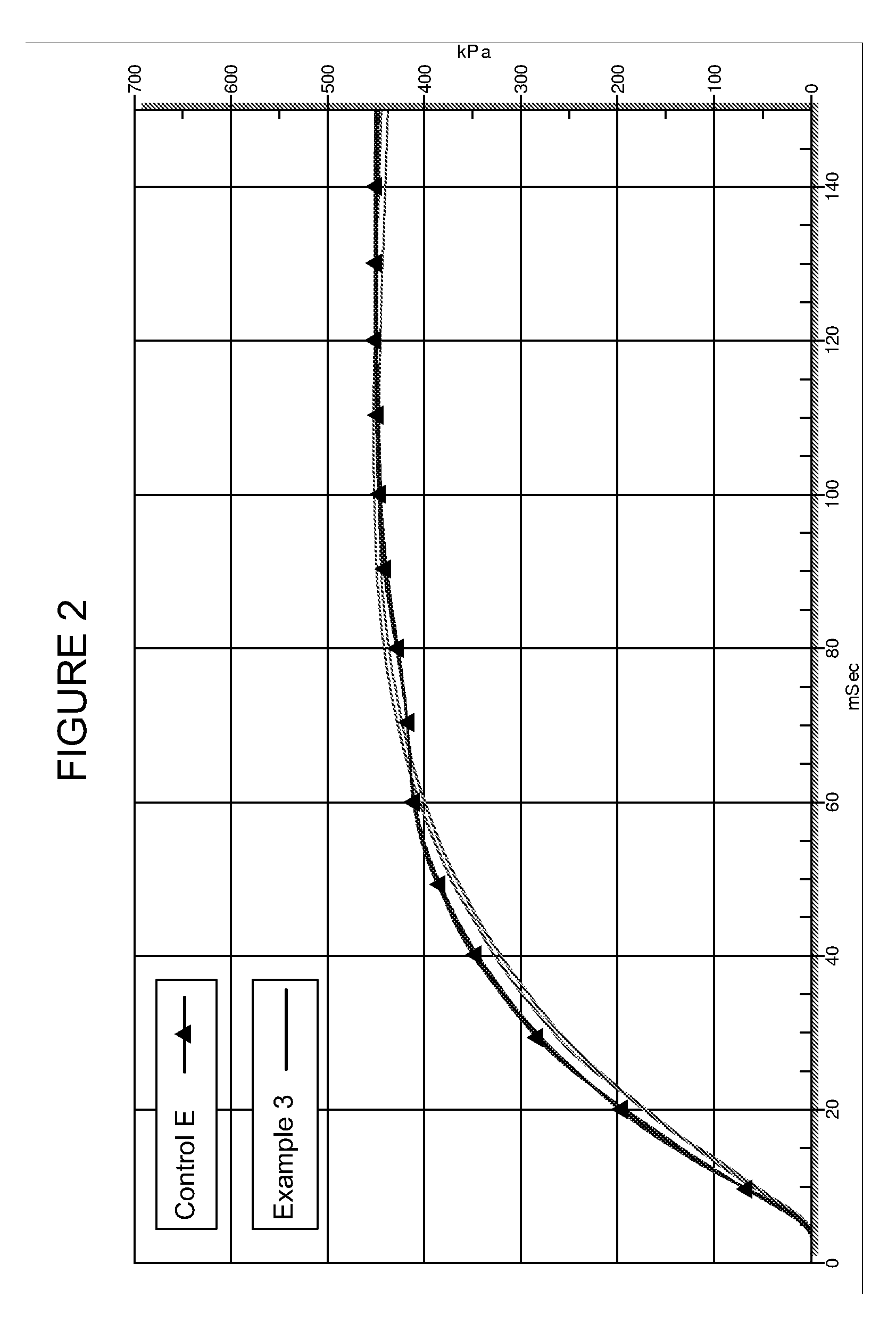Gas generating compositions having glass fibers
a technology of glass fibers and compositions, applied in the field of pyrotechnic gasgenerating compositions containing glass fibers, can solve the problems of unsatisfactory performance variability and easy pressure sensitivity of burn rate, and achieve the effects of reducing the pressure sensitivity of the fuel mixture, lessening the pressure sensitivity of burn rate, and reducing the pressure sensitivity of the gas generan
- Summary
- Abstract
- Description
- Claims
- Application Information
AI Technical Summary
Benefits of technology
Problems solved by technology
Method used
Image
Examples
example 1
[0073]Example 1 and Comparative Examples A and B are gas generants formed by mixing the constituents indicated in Table 1 below at the indicated amounts. The gas generants are formed by blending the appropriate amount of each ingredient in approximately 50% by weight hot water to form a slurry of approximately 20 grams of material based on dry weight. The slurry is then dried at approximately 80° C. with stirring to produce a granular powder. The dried granular powder is then pressed into several pellets each 0.5 inches in diameter and approximately 0.5 inches in length. The pellets are then ignited in a pressurized, closed vessel and the time of burning from one end measured. This process is repeated at multiple pressures to produce data of burning rate versus pressure.
[0074]The generant mixtures for each of Comparative Examples A, B and Example 1 are similar to one another, respectively containing a 5-amino tetrazole fuel, and a primary oxidizer of ammonium nitrate and a secondary...
example 2
[0076]Example 2 and Comparative Examples C and D are gas generants formed by mixing the compounds indicated in Table 2 below at the indicated amounts, formed and tested in the same manner as described in Example 1. The fuel mixtures for each of Comparative Examples C-D and Example 2 are similar to one another, containing a diammonium 5,5′-bitetrazole (DABT) fuel and a primary oxidizer of ammonium nitrate and a secondary oxidizer of potassium nitrate. Comparative Example C contains 5 wt. % of fumed silica particles CAB-O-SIL® M-7D and Comparative Example D contains 5 wt. % of ground silica particles MIN-U-SIL® 40. Example 2 contains about 5 wt. % of milled glass fibers, commercially available as Fibertec 9007D. Example 2 and Comparative Examples C and D are tested for density and to characterize combustion data of each respective gas generant, including burn rates at 1,000 pounds per square inch (about 6.9 MPa) and 3,000 psi (about 20.7 MPa).
[0077]As can be seen from the combustion d...
example 3
[0078]The gas generant of Example 3 is formed by mixing the compounds indicated in Table 3 below at the indicated amounts, which is pressed into a tablet having a dimension of 0.25 inches by 0.080 inches and assembled into a standard inflator. Comparative Example E gas generant is also pressed into a tablet (0.25 by 0.080 inches) in the same manner as Example 3 and assembled in the same type of standard inflator.
TABLE 3ComparativeExample (3)Example (E)CompositionWt. %Wt. %Guanidine Nitrate50.3451.85Basic Copper Nitrate41.9243.18Ammonium perchlorate1.91.96Calcium Stearate0.130.13Fumed SiO20.290.3Aluminum Oxide2.572.65Glass Fiber SiO22.85—
[0079]The inflators are deployed and performance, gas effluents, and particulate output are measured. FIG. 2 shows the gas generant performance of Example 3 and Comparative Example E during burning. The combustion stability of Example 3 is improved, as can be observed based on the smooth pressure versus time curve obtain in a 60-liter inflator tank. ...
PUM
 Login to View More
Login to View More Abstract
Description
Claims
Application Information
 Login to View More
Login to View More - R&D
- Intellectual Property
- Life Sciences
- Materials
- Tech Scout
- Unparalleled Data Quality
- Higher Quality Content
- 60% Fewer Hallucinations
Browse by: Latest US Patents, China's latest patents, Technical Efficacy Thesaurus, Application Domain, Technology Topic, Popular Technical Reports.
© 2025 PatSnap. All rights reserved.Legal|Privacy policy|Modern Slavery Act Transparency Statement|Sitemap|About US| Contact US: help@patsnap.com



